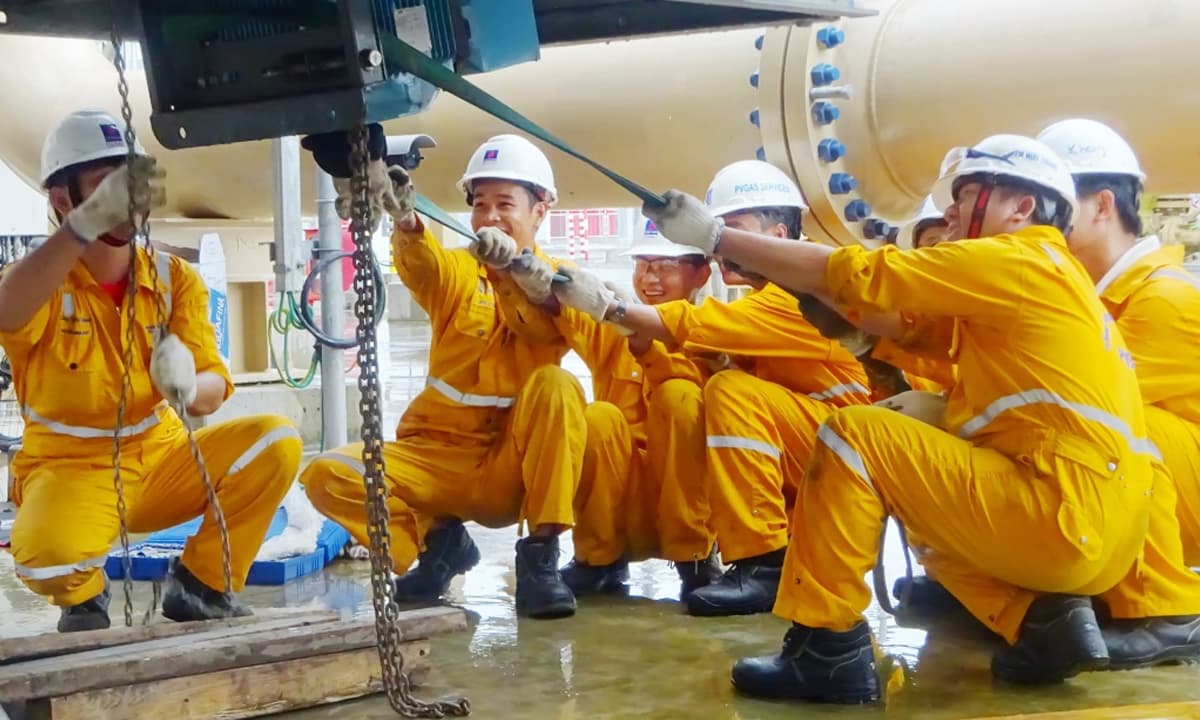Signs of Harmful Industrial Chemicals Detected in U.S. Air for the First Time

Americans’ air is teeming with all sorts of known toxin pollutants—now scientists have found a new one to add to the list.
Researchers at the University of Colorado Boulder detailed their discovery in a study published earlier this month. They sampled agricultural sites in Oklahoma and found clear traces of medium-chain chlorinated paraffins (MCCPs) in the surrounding air. The health effects of MCCPs on people are still being studied, though countries are already planning to debate whether these chemicals should be regulated.
“It’s very exciting as a scientist to find something unexpected like this that we weren’t looking for,” said lead author Daniel Katz, a chemistry PhD student at CU Boulder, in a statement from the university. “We’re starting to learn more about this toxic, organic pollutant that we know is out there, and which we need to understand better.”
While environmental regulations in recent decades have greatly reduced levels of certain pollutants in the air and environment, such as lead, there are still many other lingering airborne toxins out there. Scientists have detected compounds like polychlorinated biphenyls (PCBs) phenylcyclohexene (PCH), and per- and polyfluoroalkyl substances (PFAS) in the air, for instance—many of which have the potential to disturb our hormones.
MCCPs and other chlorinated paraffins are common industrial chemicals. They’re regularly used as flame retardants and plasticizers (substances that improve flexibility and softness) in a variety of applications. But research has started to suggest that much like short-chain chlorinated paraffins (SCCPs), MCCPs aren’t without their risks. They appear to be toxic to marine and other aquatic environments, for instance. They might also persist in the environment and our bodies for a very long time, similar to so-called forever chemicals like per- and polyfluoroalkyl substances (PFAS).
The CU Boulder researchers weren’t aiming to find MCCPs in the air—they were simply trying to document the general identity, distribution, and behavior of aerosol particles in the atmosphere. They planted a nitrate chemical ionization mass spectrometer at the study site for a month, 24 hours a day. To their surprise, they came across compounds with different patterns than expected, which they eventually determined were actually MCCPs.
Their findings, published in ACS Environmental Au, represent not only the first detection of airborne MCCPs in the U.S., but in the Western Hemisphere as a whole. MCCPs have been regularly found in wastewater, which can be recycled into biosolid fertilizer. So in this particular case, the researchers suspect that the chemicals came from the biosolid fertilizer used in the field near their study site.
“When sewage sludges are spread across the fields, those toxic compounds could be released into the air,” Katz said. “We can’t show directly that that’s happening, but we think it’s a reasonable way that they could be winding up in the air. Sewage sludge fertilizers have been shown to release similar compounds.”
SCCPs have been regulated in the U.S. and other countries for several years now. But experts argue that this regulation has spurred manufacturing industries to rely more on MCCPs as an alternative, leading to increased pollution. Members of the Stockholm Convention on Persistent Organic Pollutants, a UN-led international treaty that meets biannually to address potential threats to the environment and human health, are set to discuss this year whether MCCPs should be added to the list of organic chemicals that warrant regulation.
Whatever the verdict of the Stockholm Convention, the CU Boulder researchers say that much remains unknown about MCCPs. And they’re hoping they and other scientists can continue to study these chemicals.
“We identified them, but we still don’t know exactly what they do when they are in the atmosphere, and they need to be investigated further,” Katz said. “I think it’s important that we continue to have governmental agencies that are capable of evaluating the science and regulating these chemicals as necessary for public health and safety.”
Unfortunately, the U.S. Environmental Protection Agency may not be up to such a task currently. The renewed Trump administration has started to defang the EPA in all sorts of ways, from telling staffers to ease up on the fossil fuel industry to repealing already-created regulations on greenhouse emissions. MCCPs may be a real public health threat, but there’s little indication that U.S. regulators will be interested in tackling them, at least under President Donald Trump.









